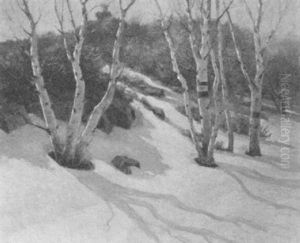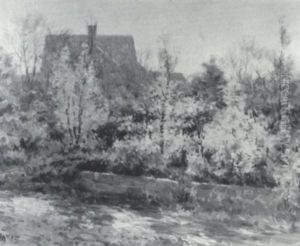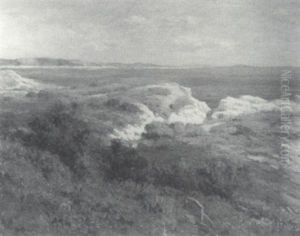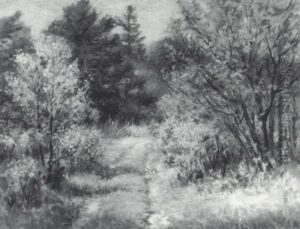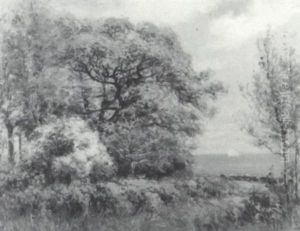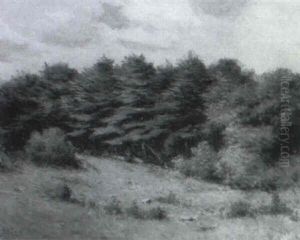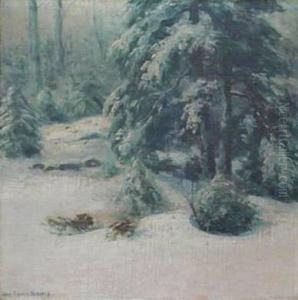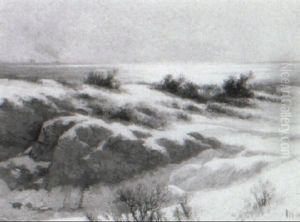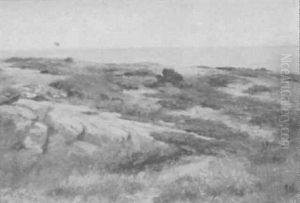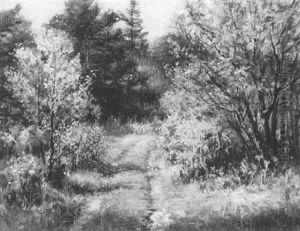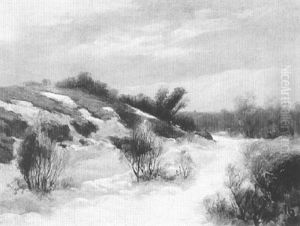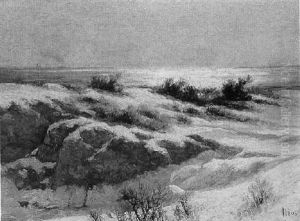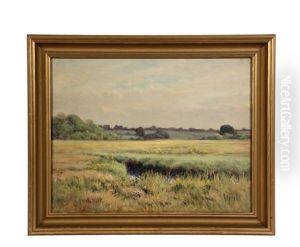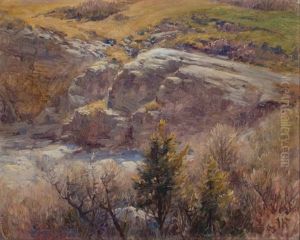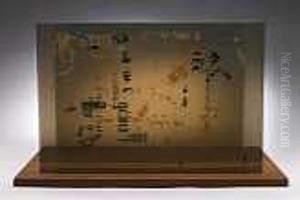John Calvin Stevens Paintings
John Calvin Stevens was an American architect, born on October 8, 1855, in Boston, Massachusetts, but primarily associated with the state of Maine, where he moved with his family at a young age. He grew up in Portland and later attended the Massachusetts Institute of Technology (MIT), although he did not complete his degree. Instead, Stevens began his architectural career as an apprentice in the office of the influential Portland architect Francis H. Fassett.
Stevens quickly established himself as a talented designer and, in 1880, he opened his own office in Portland. He gained prominence as a leading proponent of the Shingle Style of architecture, which was popular in the United States from about 1880 to 1900. This style is characterized by the use of shingles on the exterior walls, asymmetrical forms, and integration with the landscape, which made it an ideal choice for the coastal New England environment.
One of Stevens' most significant contributions to American architecture is his role in the development of the Shingle Style. His residential designs, such as the Portland cottage for the painter Winslow Homer, epitomize the style's emphasis on harmony with the natural surroundings and casual, open interior spaces. Stevens' work extended beyond residential architecture to include commercial buildings, churches, and public institutions, showcasing his versatility as an architect.
Throughout his career, Stevens was a prolific architect, with hundreds of buildings to his credit, predominantly in Maine but also throughout New England and as far away as Florida. His legacy is particularly strong in Portland, where a considerable number of his buildings still stand, contributing to the city's architectural heritage.
John Calvin Stevens continued to practice architecture well into his eighties. He passed away on January 25, 1940, in Portland, Maine, leaving behind a lasting impact on the architectural landscape of New England. His work remains celebrated for its regional appropriateness and its innovative approach to creating homes and buildings that were both functional and aesthetically pleasing.

